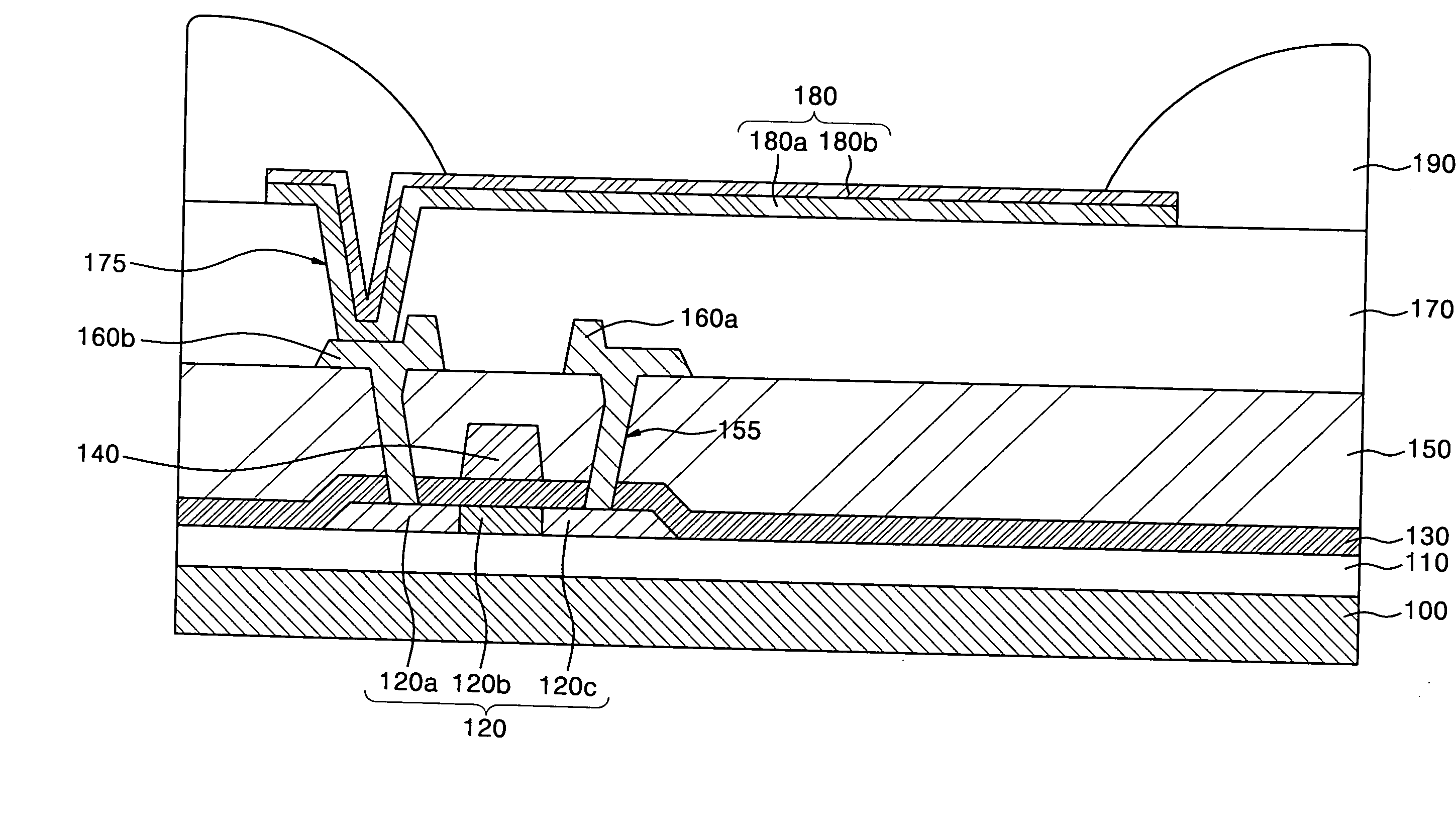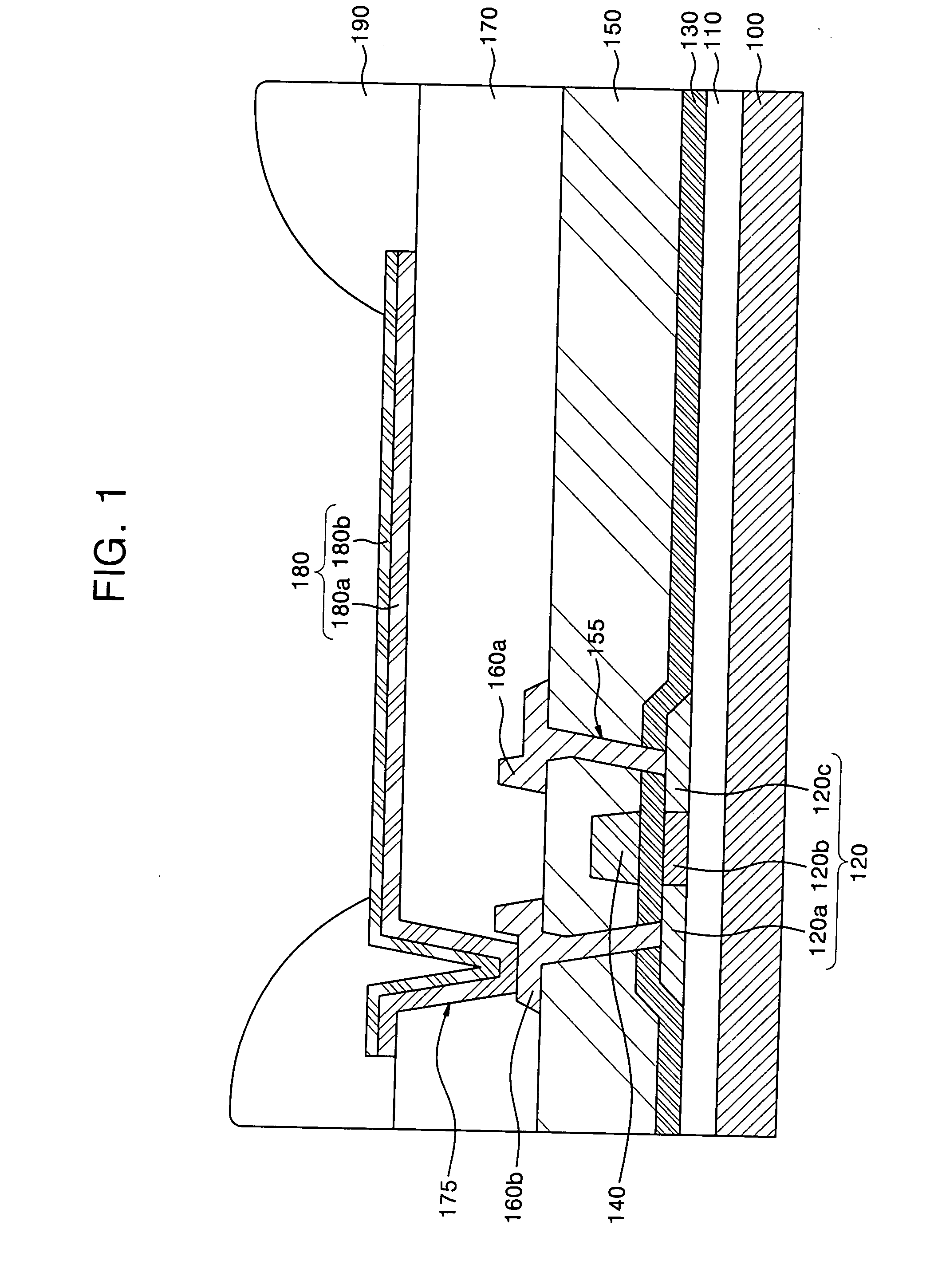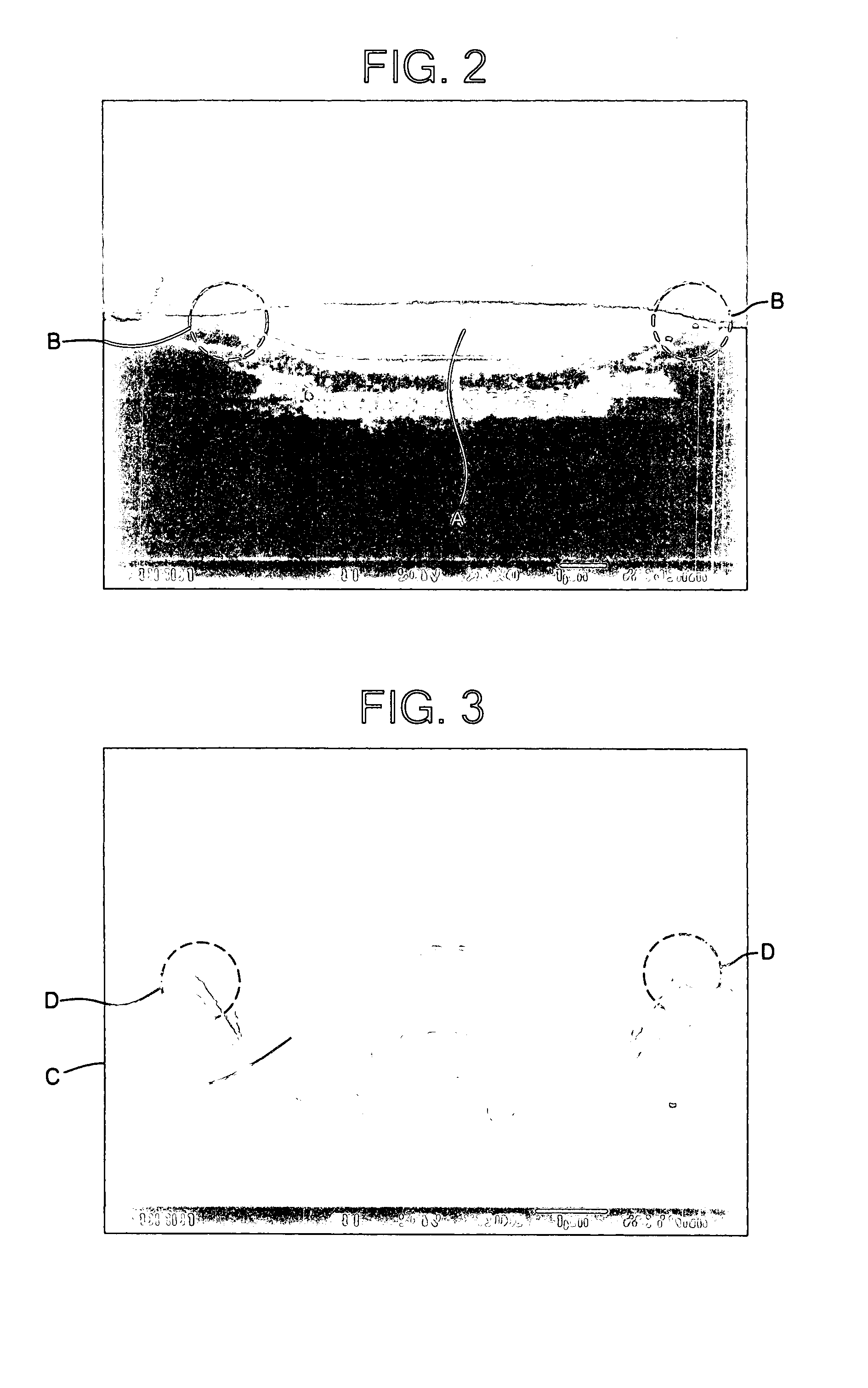Organic light emitting display device and method of fabricating the same
a light-emitting display and organic technology, applied in the direction of solid-state devices, thermoelectric devices, meat/fish preservation, etc., can solve the problems of high transfer energy, open defects, and high aperture ratio, and achieve the effect of increasing (or maximizing) the transfer efficiency
- Summary
- Abstract
- Description
- Claims
- Application Information
AI Technical Summary
Benefits of technology
Problems solved by technology
Method used
Image
Examples
experimental example
[0064] A planarization layer was formed to a thickness of 1 μm using SOG on a substrate having a substructure (which may be predetermined). A trench was formed to a thickness of about 1000 Å on the planarization layer, and a first electrode including a 1000 Å-thick reflective metal layer and a 70 Å-thick transparent conductive layer was formed to have opposite ends in the trench. A pixel defining layer was formed to a thickness of 2000 Å using polyimide on the first electrode. Then, the pixel defining layer was patterned so as to form an opening for exposing the first electrode.
[0065] An organic layer was formed by an LITI method in the opening. A second electrode was formed on the entire surface of the substrate including the organic layer, and thus an organic light emitting display device was completed.
PUM
 Login to View More
Login to View More Abstract
Description
Claims
Application Information
 Login to View More
Login to View More - R&D
- Intellectual Property
- Life Sciences
- Materials
- Tech Scout
- Unparalleled Data Quality
- Higher Quality Content
- 60% Fewer Hallucinations
Browse by: Latest US Patents, China's latest patents, Technical Efficacy Thesaurus, Application Domain, Technology Topic, Popular Technical Reports.
© 2025 PatSnap. All rights reserved.Legal|Privacy policy|Modern Slavery Act Transparency Statement|Sitemap|About US| Contact US: help@patsnap.com



